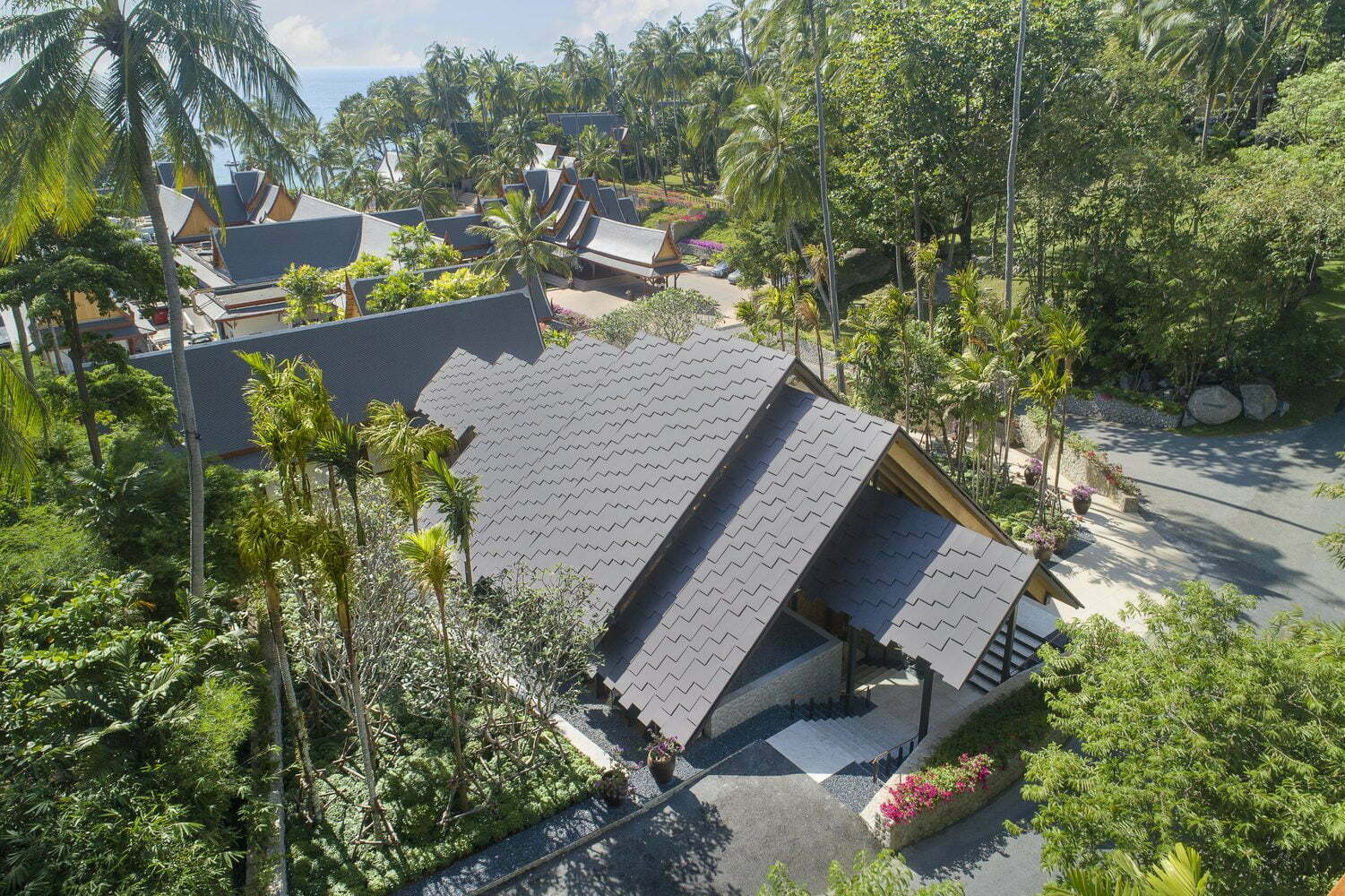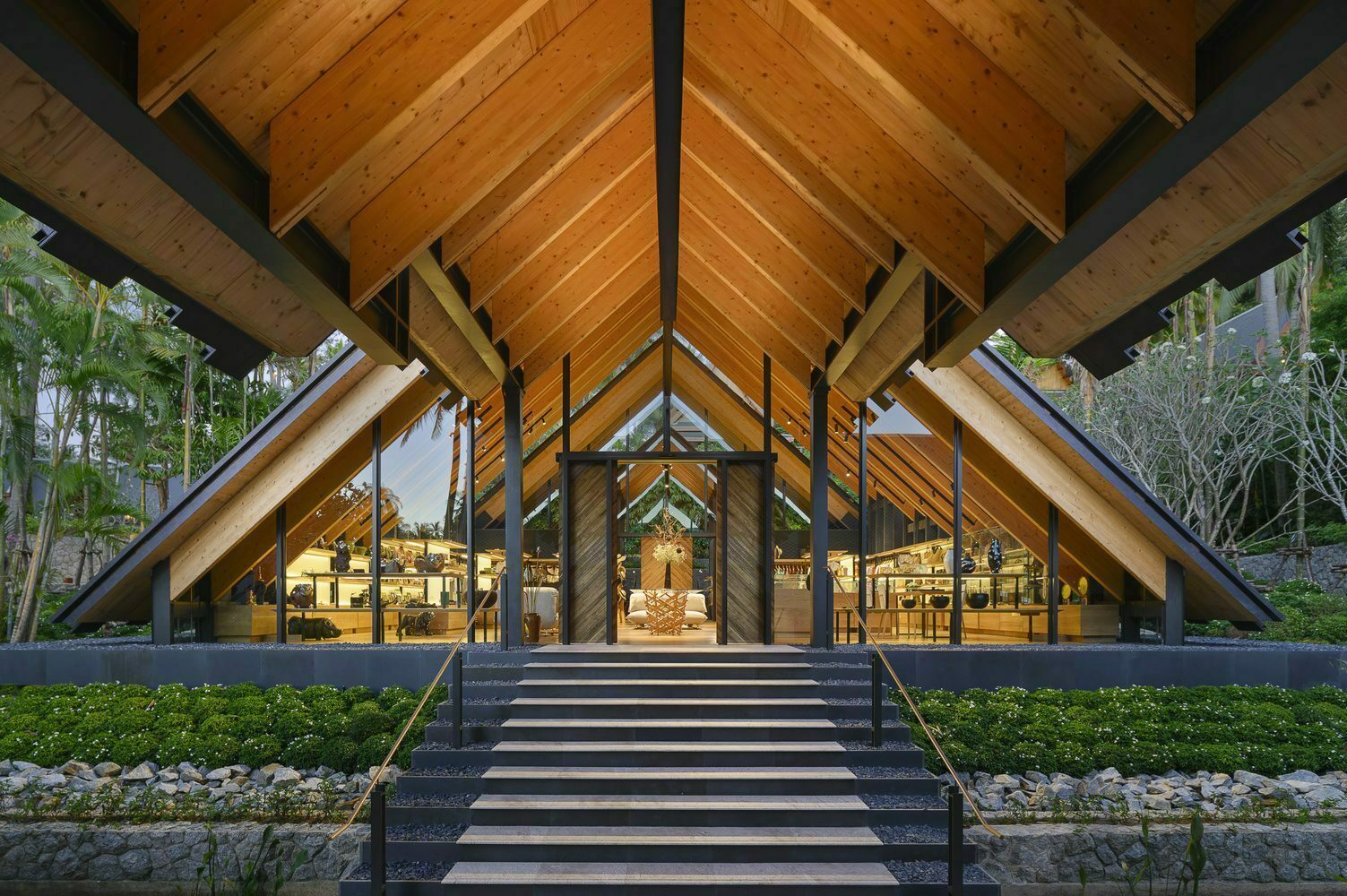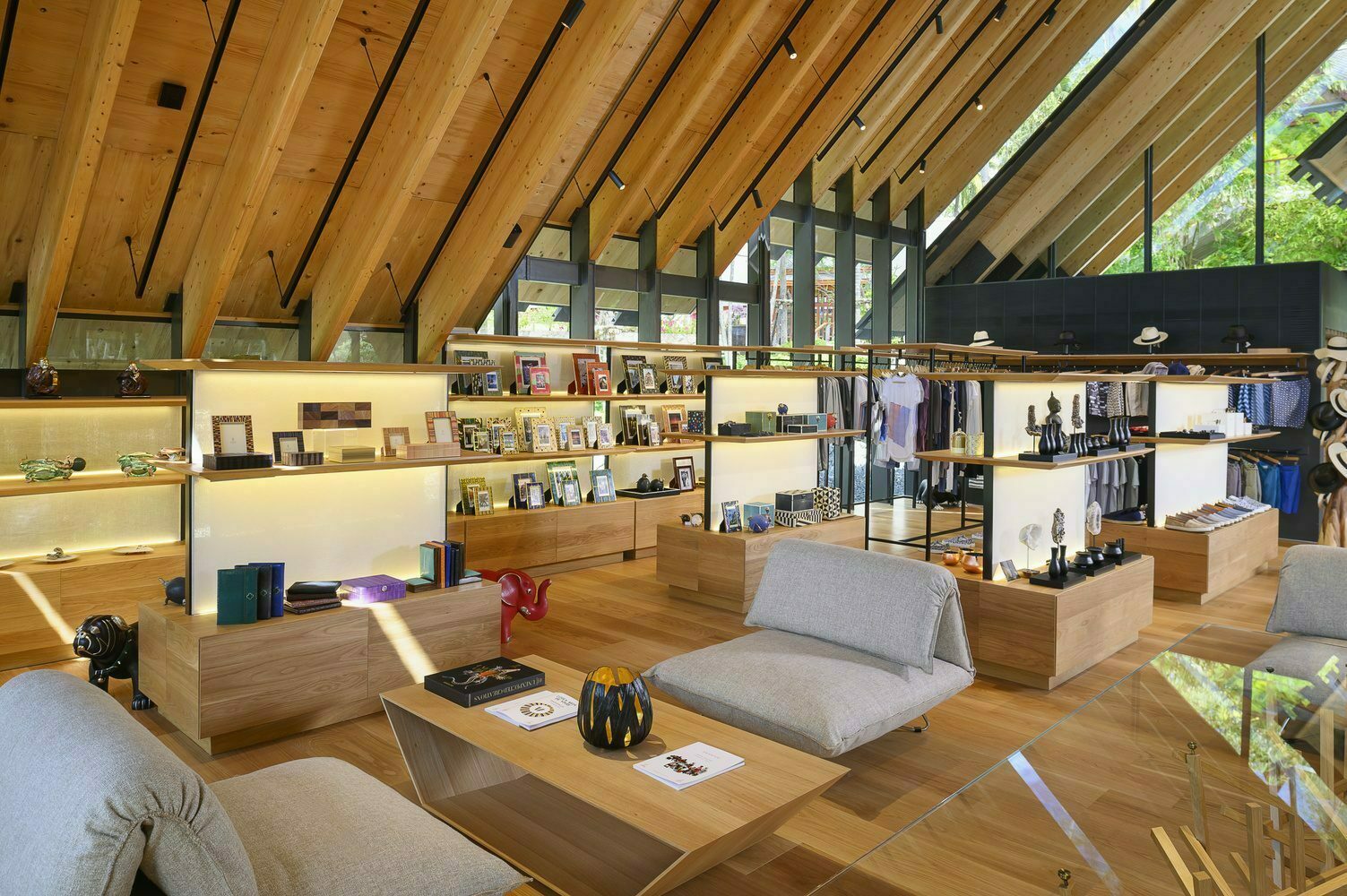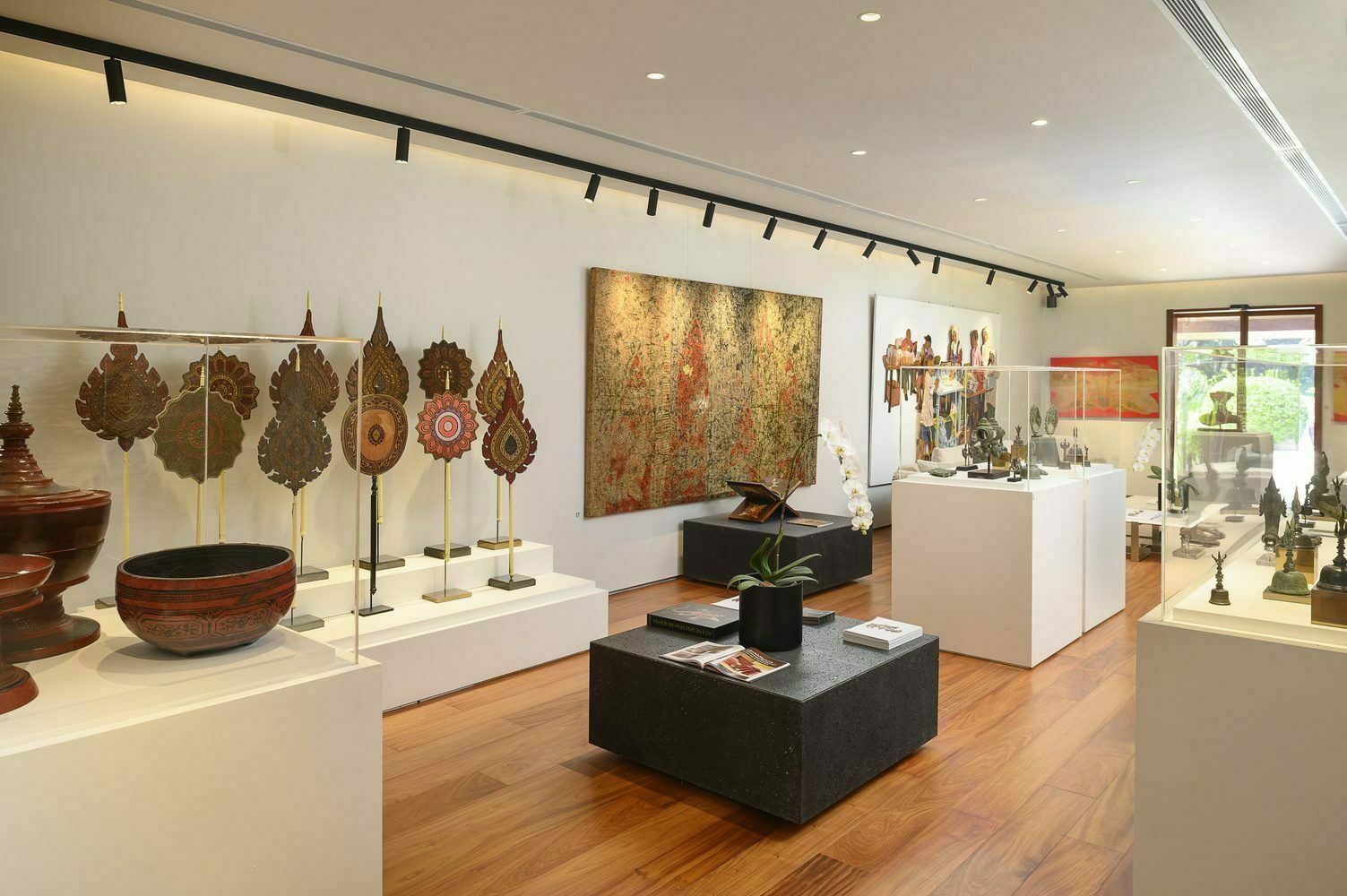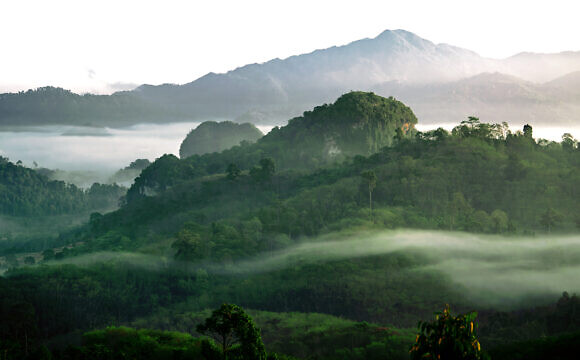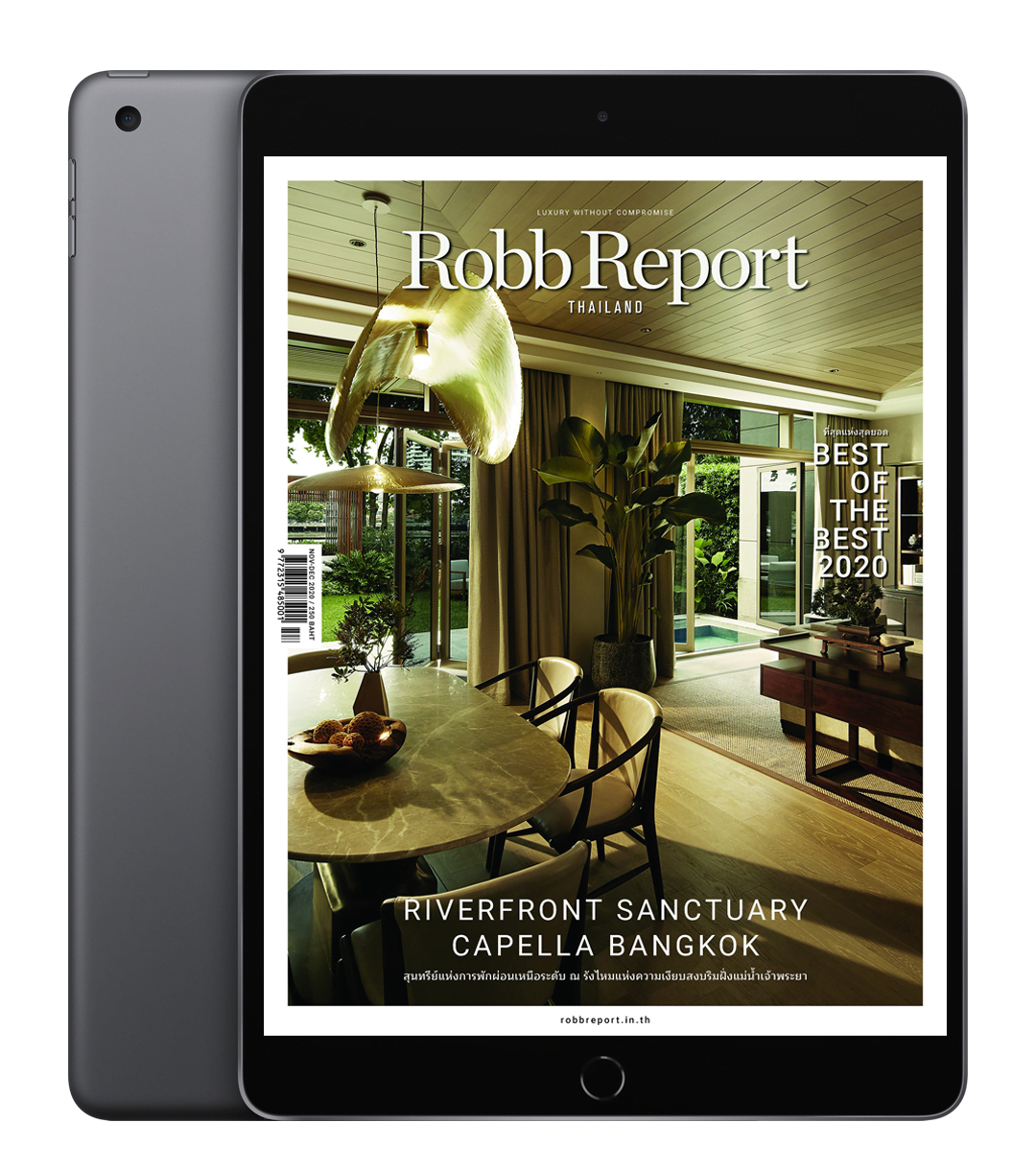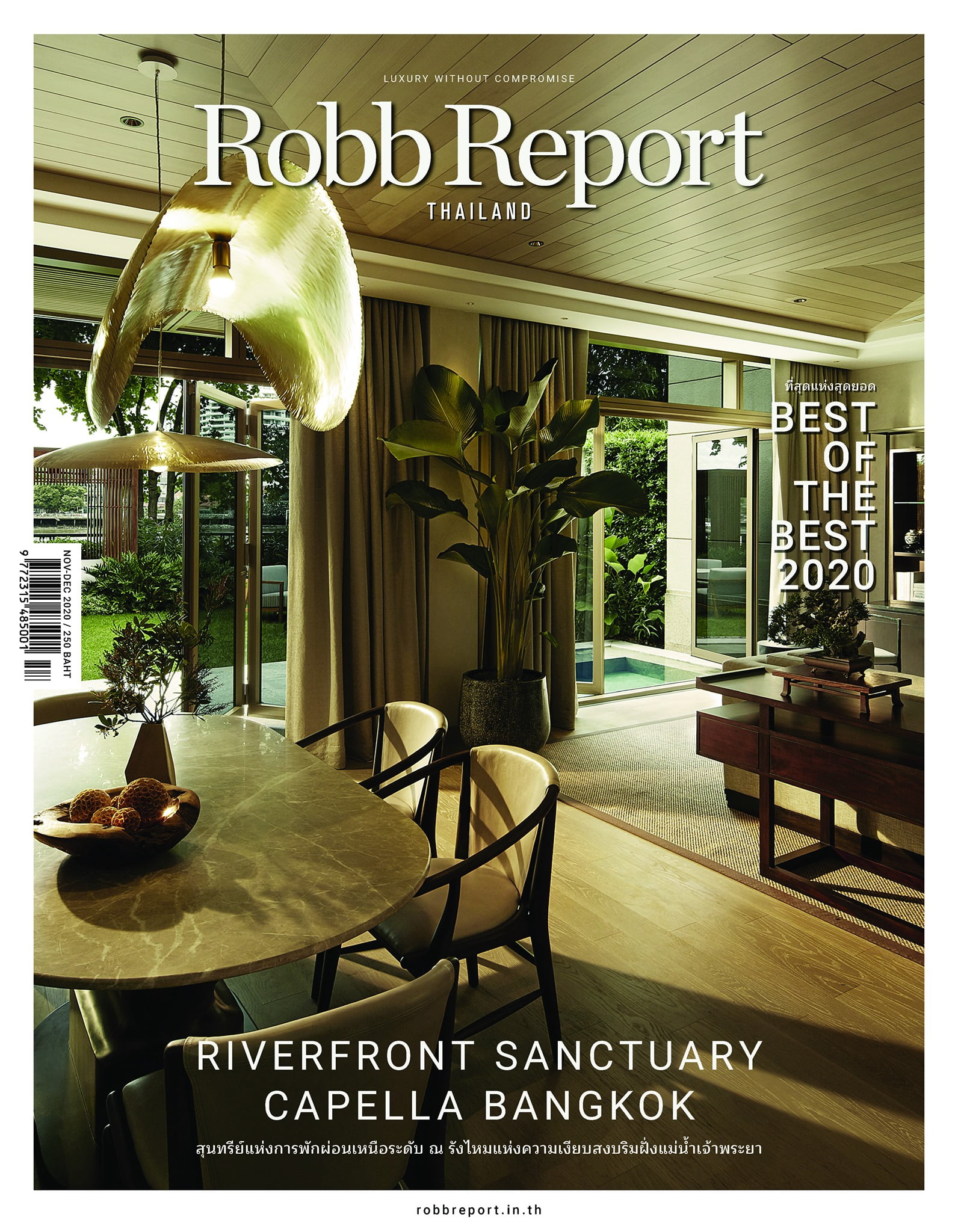Acclaimed Japanese architect Kengo Kuma’s portfolio spans multiple continents, including most recently the Retail Pavilion at Amampuri Phuket and the Odunpazari Modern Museum (OMM) in Turkey
As the only two nations in Asia that were never colonized by foreign powers, Thailand and Japan have enjoyed a long and symbiotic relationship. The Japanese influence on Thailand’s popular culture has been considerable: movies, soap operas, comic books, music, cosplay, fine arts and design have attracted a loyal base of cult followers.
That synergy between the two nations is on elegant display at the Retail Pavilion in the Amanpuri resort on Phuket. The pavilion’s design mastermind is none other than the highly regarded Japanese architect Kengo Kuma and Associates.
The new structure, which is the hotel chain’s first retail outlet, features a steeply pitched roof that harmonizes with Amanpuri’s main muse: the ancient Thai capital of Ayutthaya. Reminding some of the resort’s cinematic stairway to Pansea Beach, a wide flight of steps leads down to the spacious boutique floor, which has been nicely and subtly divided into different retail spaces around a central lounge area. Here guests can pause for refreshment while relaxing on limited edition furniture pieces that were also designed by Kengo Kuma.
An all-round designer, the Japanese national shares the Aman philosophy, which he summed up in his often-quoted belief that “architecture is a frame for nature." In his influential work from 2008 entitled, “Anti-Object: The Dissolution and Disintegration of Architecture," he articulates the need for an architecture of relations that respects the surroundings and environs instead of dominating them.
That notion has been both realized and validated in the Retail Pavilion. One look at images of the big picture shows how the structure not only blends in with the Thai-style villas but also the trees surrounding them. Moreover, at a time when ecological issues like deforestation, climate change and the extinction of endangered species are becoming evermore urgent, this message of respecting nature is increasingly important.
Drawing inspiration from nature and using natural materials like timber, stone and paper in its designs has always been a calling card for the Japanese firm. Take the Odunpazari Modern Museum (OMM) in Turkey as a stunning example. Opened last September, the design utilizes stacked wood to striking effect. The wood evokes the supremacy of nature just as it invokes the streetscapes and timber town history of Eskisehir, a city in Turkey’s northwest. As Kengo Kuma said, “We wanted the building to resonate on many levels."
For the OMM design, the stacking techniques and geometric lines suggest both a Zen-like simplicity and a minimalist approach to art that complements many of the installations and artworks on display at this Turkish museum. As a connecting and unifying device, the central atrium, constructed out of timber blocks, links all the different levels and allows the natural light to flow through the skylight to let the artists creativity shine.
In regard to the opening of the Retail Pavilion earlier this year on Phuket, Aman’s Chairman and CEO, Vladislav Doronin, said, “We are delighted to be working with our friend Kengo Kuma again on another project, and for his iconic style to find a permanent home at Amanpuri, 32 years on, we strive to make Amanpuri even more exceptional, and this carefully curated retail collection, housed in a spectacular design, creates an immersive new experience for guests."
Indeed, for shoppers this is both an immersive and exclusive experience. You won’t find any tacky souvenirs or gaudy T-shirts here. Some of the five-star goodies on offer include Lotus Arts de Vivre’s extraordinary line of jewellery inspired by the mythology and folklore of Asia, as well as Alexander Lamont’s exquisitely sculpted homeware, like boxes made from parchment and bronze trays lined with gold.
Guests can also choose from designer swimwear, brand name sunglasses and a wealth of arts and crafts. The Renaissance man Kengo Kuma also designed the beautiful vessels for Aman Skincare, the hotel chain’s all-natural skincare range, which are on sale here too, to allow guests to take home a piece of the Aman’s lifestyle – healthy and luxurious – home with them.
Summing up his feelings about the project, Kengo Kuma said, “As the original location in the world-renowned Aman experience, Amanpuri carries both storied tradition and deep-rooted excellence that is anchored in a sense of place. Our idea draws on the leitmotif of repeated rhythms in the roofs, while strengthening the connections to the surrounding nature. Our design for the Retail Pavilion is both familiar and new, and we hope its scale and integration conveys our respect for what has preceded us, and enthusiasm for Aman’s future."


